Golf
Masters of the Green: Celebrating Golf’s Elite
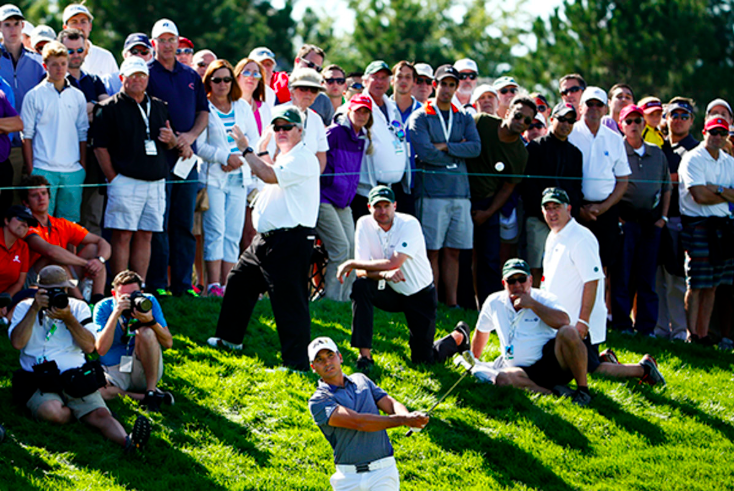
Masters of the Green: Celebrating Golf’s Elite
Golf, a game of precision and patience, has seen many legends grace its greens. From the early days of the sport to the present, numerous players have left an indelible mark with their exceptional skills and achievements. In this article, we will delve into the list of top players of golf, celebrating their contributions to the sport and examining what makes them stand out. Join us as we explore the lives and legacies of golf’s greatest.
A Historical Overview of Golf’s Legends
Early Pioneers of the Game
Old Tom Morris
Old Tom Morris, often regarded as the founding father of professional golf, played a pivotal role in shaping the sport. Born in St Andrews, Scotland, in 1821, Morris was a four-time winner of The Open Championship and a renowned course designer. His contributions to golf course architecture and maintenance practices laid the foundation for modern golf.
Harry Vardon
Harry Vardon, an English professional golfer, dominated the sport in the early 20th century. Vardon won The Open Championship six times, a record that still stands today. His innovation of the Vardon Grip, a gripping technique still widely used, revolutionized how golfers held their clubs and played the game.
The Golden Era of Golf
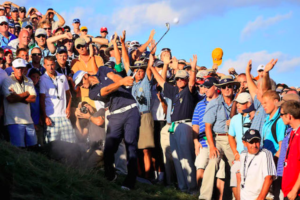
Bobby Jones
Bobby Jones, an amateur golfer from Atlanta, Georgia, is celebrated for his remarkable achievements in the 1920s and 1930s. Jones won 13 major championships, including the Grand Slam in 1930, where he clinched all four major titles in a single calendar year. His legacy extends beyond his playing career, as he co-founded the Augusta National Golf Club and the Masters Tournament.
Ben Hogan
Ben Hogan, known for his incredible work ethic and precise ball-striking, is one of golf’s all-time greats. Overcoming a near-fatal car accident in 1949, Hogan returned to win six of his nine major titles, including three U.S. Opens. His dedication to practice and mastery of the golf swing set new standards for aspiring golfers.
Arnold Palmer
Arnold Palmer, affectionately known as “The King,” was a charismatic and influential figure in golf. Palmer’s aggressive playing style and magnetic personality endeared him to fans worldwide. He won seven major championships and played a crucial role in popularizing golf through his association with televised tournaments.
Modern Golf Icons
Jack Nicklaus
Jack Nicklaus, widely regarded as the greatest golfer of all time, boasts a record 18 major championship victories. Nicknamed “The Golden Bear,” his strategic approach to the game and unmatched consistency made him a formidable competitor. Nicklaus’ contributions to golf course design and his charitable efforts continue to impact the sport positively.
Tiger Woods
Tiger Woods revolutionized golf with his athleticism, mental toughness, and unmatched talent. Bursting onto the scene in the late 1990s, Woods quickly became a global icon. He has won 15 major championships and inspired a new generation of golfers with his dominance and resilience, especially after his triumphant return to win the 2019 Masters.
Phil Mickelson
Phil Mickelson, known for his skillful short game and daring shot-making, has secured his place among golf’s elite. With six major championships to his name, including three Masters titles, Mickelson’s longevity and continued success into his 50s make him a fan favorite. His victory at the 2021 PGA Championship at age 50 set a record as the oldest major winner.
Rising Stars in Golf
Rory McIlroy
Rory McIlroy, a Northern Irish golfer, has quickly become one of the sport’s brightest stars. With four major championships and numerous other titles, McIlroy’s powerful driving and consistent performance have earned him a place among the best. His commitment to fitness and advocacy for the sport’s growth continue to influence golf’s future.
Brooks Koepka
Brooks Koepka’s rise to prominence has been marked by his impressive performances in major championships. Koepka has won four majors, including back-to-back U.S. Opens in 2017 and 2018. His physical prowess and mental fortitude make him a formidable contender in any tournament.
Jordan Spieth
Jordan Spieth, known for his exceptional putting and composure under pressure, has captured three major championships. Spieth’s 2015 season, where he won the Masters, U.S. Open, and finished second in the PGA Championship, is considered one of the greatest seasons in golf history. His determination and sportsmanship continue to inspire young golfers.
Women Who Shaped Golf

Annika Sörenstam
Annika Sörenstam, a Swedish professional golfer, is widely regarded as one of the greatest female golfers. With 10 major championships and 72 LPGA Tour victories, Sörenstam dominated women’s golf in the late 1990s and early 2000s. Her pioneering efforts, including competing in a men’s PGA Tour event, broke barriers and expanded opportunities for women in golf.
Lorena Ochoa
Lorena Ochoa, from Mexico, is another legendary figure in women’s golf. Ochoa was the world number one female golfer for 158 consecutive weeks, from 2007 to 2010. She won two major championships and 27 LPGA Tour events before retiring at the peak of her career. Ochoa’s impact extends beyond her playing days through her charitable work and contributions to the sport.
Inbee Park
Inbee Park, a South Korean golfer, has left an indelible mark on women’s golf with her outstanding achievements. Park has won seven major championships and is known for her exceptional putting skills. She made history by winning the Olympic gold medal in women’s golf at the 2016 Rio de Janeiro Olympics, further solidifying her legacy.
Emerging Talents in Women’s Golf
Nelly Korda
Nelly Korda, an American professional golfer, has quickly risen to prominence with her impressive performances on the LPGA Tour. Korda won her first major championship at the 2021 Women’s PGA Championship and has consistently been among the top-ranked players. Her athleticism and determination make her a promising star in women’s golf.
Jin Young Ko
Jin Young Ko, from South Korea, has established herself as one of the top players in women’s golf. Ko has won multiple major championships, including the ANA Inspiration and The Evian Championship. Her precision and consistency have earned her accolades and admiration from fans and fellow players alike.
Brooke Henderson
Brooke Henderson, a Canadian golfer, has made a significant impact on the LPGA Tour with her powerful driving and strong all-around game. Henderson has won multiple tournaments, including a major championship at the KPMG Women’s PGA Championship. Her success at a young age positions her as a future star in the sport.
Golf’s Impactful Innovators and Contributors
Gary Player
Gary Player, known as “The Black Knight,” is one of golf’s most successful and respected figures. With nine major championships and numerous international victories, Player’s career is marked by his dedication to fitness and global promotion of golf. His contributions to golf course design and philanthropy have left a lasting legacy.
Seve Ballesteros
Seve Ballesteros, a charismatic and talented golfer from Spain, is celebrated for his creativity and flair on the golf course. Ballesteros won five major championships and played a pivotal role in revitalizing European golf. His influence extended beyond his playing career through his efforts to grow the sport in Spain and Europe.
Nancy Lopez
Nancy Lopez, an American professional golfer, is renowned for her impact on women’s golf in the 1970s and 1980s. Lopez won 48 LPGA Tour events, including three major championships. Her engaging personality and exceptional skill helped elevate the profile of women’s golf and inspire future generations of female golfers.
The Evolution of Golf Equipment and Technology
Advancements in Golf Clubs
The evolution of golf equipment has played a significant role in shaping the game. Early wooden clubs have been replaced by modern, high-tech materials such as titanium and carbon fiber. These advancements have allowed players to achieve greater distances and accuracy, revolutionizing the way golf is played.
The Introduction of Golf Balls
Golf balls have also undergone significant changes, from feather-filled leather balls to the multi-layered, high-performance balls used today. These advancements in ball technology have improved control, spin, and distance, enabling players to achieve remarkable feats on the course.
Innovations in Golf Course Design
Golf course design has evolved to meet the demands of modern players and spectators. Early courses were often simple and natural, while contemporary designs incorporate sophisticated landscaping, water features, and challenging layouts. Notable designers like Pete Dye, Tom Fazio, and Robert Trent Jones have created iconic courses that test the skills of the best golfers.
The Role of Golf Tournaments in Shaping Careers
The Masters Tournament
The Masters Tournament, held annually at Augusta National Golf Club, is one of golf’s most prestigious events. Winning the Masters is a career-defining achievement, and the tournament has produced countless memorable moments. The iconic green jacket awarded to the winner symbolizes excellence and tradition in golf.
The Open Championship
The Open Championship, also known as The British Open, is the oldest major golf tournament. Played on historic links courses in the United Kingdom, The Open tests players’ skills in challenging conditions. Victories at The Open have cemented the legacies of many of golf’s greatest players.
The U.S. Open
The U.S. Open, organized by the United States Golf Association (USGA), is known for its demanding courses and tough scoring conditions. Winning the U.S. Open is a testament to a player’s resilience and skill. The U.S. Open has seen some of the most dramatic moments in golf history, with players needing to navigate tight fairways and fast greens to emerge victorious. This tournament has been a crucial stage for many golfers to prove their mettle under intense pressure.
The PGA Championship
The PGA Championship, organized by the Professional Golfers’ Association of America, is another major tournament that has a significant impact on a golfer’s career. Known for its competitive field and challenging course setups, the PGA Championship is often seen as a true test of a player’s all-around game. Winning this championship is a major milestone for any golfer, often propelling them to new heights in their careers.
The Importance of Mental Strength in Golf
The Psychology of Winning
Golf is as much a mental game as it is a physical one. The ability to maintain focus, manage stress, and stay calm under pressure is crucial for success. Players like Jack Nicklaus and Tiger Woods have often spoken about the importance of mental toughness in achieving their goals. Mental resilience allows players to recover from bad shots and maintain their composure during critical moments.
Visualization and Routine
Top golfers use techniques such as visualization and pre-shot routines to prepare for each shot. Visualization involves imagining the perfect shot in detail, which helps in executing it flawlessly. A consistent pre-shot routine helps in calming the nerves and maintaining focus. These techniques are part of the mental game that separates good players from great ones.
Handling Pressure and Expectations
Handling the pressure of competition and the expectations of fans and media is a significant challenge. Players like Phil Mickelson and Rory McIlroy have faced immense pressure at various stages of their careers. Their ability to manage these pressures and perform at the highest level is a testament to their mental strength and preparation.
The Influence of Coaching and Caddies
The Role of Coaches
Behind every successful golfer is a team of coaches who work tirelessly to hone their skills. Coaches play a critical role in analyzing players’ swings, improving their techniques, and providing strategic advice. Legends like Ben Hogan and modern stars like Jordan Spieth have benefited immensely from their coaches’ guidance.
The Importance of Caddies
Caddies are often the unsung heroes in golf. They provide valuable insights into the course, help with club selection, and offer emotional support during tournaments. The bond between a player and their caddy can significantly impact performance. Notable caddy-player partnerships, such as Tiger Woods and Steve Williams, have been instrumental in achieving major victories.
Golf’s Global Reach and Cultural Impact
Golf in Asia
The rise of golf in Asia has been remarkable, with players from the region making significant strides on the global stage. South Korea, in particular, has produced numerous top female golfers like Inbee Park and Se Ri Pak. The success of Asian golfers has inspired a new generation and increased the sport’s popularity in the region.
Golf in Europe
Europe has a rich golfing tradition, with countries like Scotland, England, and Spain producing some of the sport’s greatest players. The Ryder Cup, a biennial competition between teams from Europe and the United States, has further fueled the passion for golf in Europe. Players like Seve Ballesteros and Rory McIlroy have become iconic figures, contributing to the sport’s growth and appeal.
Golf in North America
North America remains a powerhouse in the world of golf, with the United States and Canada producing many top players. The PGA Tour, based in the U.S., is the premier professional golf circuit, attracting the best talent from around the world. The influence of North American golfers, both male and female, continues to shape the sport’s direction and popularity.
The Future of Golf
Emerging Technologies
The future of golf is being shaped by technological advancements that enhance the playing experience and performance. Innovations like launch monitors, GPS-based course management systems, and smart clubs are providing players with more data and insights to improve their game. Virtual reality and augmented reality are also being explored to create immersive training experiences.
Sustainability in Golf
The golf industry is increasingly focusing on sustainability and environmental stewardship. Golf courses are adopting practices to reduce water usage, manage waste, and preserve natural habitats. Organizations like the Golf Environment Organization (GEO) are working to promote sustainable practices in golf course management and tournament operations.
Inclusivity and Diversity
Efforts to make golf more inclusive and diverse are gaining momentum. Initiatives to introduce the sport to underrepresented communities and provide opportunities for people of all backgrounds are being implemented. Programs aimed at increasing female participation and supporting golfers with disabilities are helping to create a more inclusive environment in the sport.
Conclusion
The list of top players of golf is a testament to the sport’s rich history and the incredible talent that has graced its fairways. From the pioneers like Old Tom Morris and Harry Vardon to modern icons like Tiger Woods and Rory McIlroy, each player has contributed to the legacy and evolution of golf. As the sport continues to grow and adapt to new challenges and opportunities, the future looks bright for the next generation of golfers.
Frequently Asked Questions (FAQs)
Who is considered the greatest golfer of all time?
Jack Nicklaus is widely regarded as the greatest golfer of all time, with a record 18 major championship victories. His strategic approach and consistent performance have set him apart in the history of golf.
What are the major championships in golf?
The four major championships in golf are The Masters, The Open Championship, the U.S. Open, and the PGA Championship. These tournaments are considered the most prestigious in the sport and have a significant impact on a golfer’s career.
How has technology impacted golf?
Technology has revolutionized golf in many ways, from advanced club and ball designs to sophisticated training tools like launch monitors and virtual reality. These innovations have improved players’ performance and enhanced the overall golfing experience.
What is the role of a caddy in golf?
A caddy provides valuable insights into the course, helps with club selection, and offers emotional support to the player. The caddy-player relationship is crucial for strategic planning and maintaining focus during tournaments.
How is golf becoming more inclusive?
Efforts to make golf more inclusive include introducing the sport to underrepresented communities, increasing female participation, and supporting golfers with disabilities. Initiatives and programs are being implemented to create a more diverse and welcoming environment in golf.
This comprehensive overview of golf’s top players and the sport’s evolution provides a deep dive into the factors that have shaped golf’s rich history. By celebrating these legends and exploring current trends, we can appreciate the enduring appeal and future potential of this beloved game.
Golf
Justin Thomas Net Worth: Unveiling the Wealth of a Golfing Prodigy
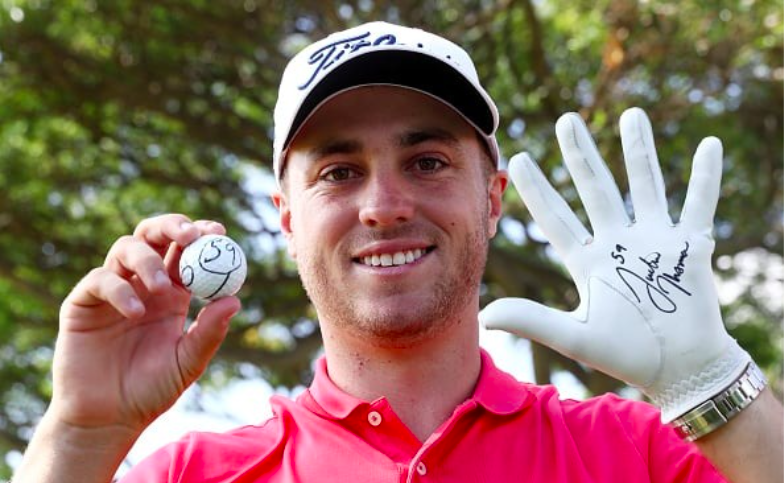
Justin Thomas Net Worth: Unveiling the Wealth of a Golfing Prodigy
Justin Thomas, an elite professional golfer, has made a significant mark in the world of golf with his impressive achievements and growing financial success. This article provides an in-depth analysis of Justin Thomas’s net worth, exploring his career milestones, endorsement deals, and personal investments. We aim to offer a comprehensive view of how Thomas has accumulated his wealth and what factors contribute to his financial standing.
Early Life and Career Beginnings
The Early Years
Justin Thomas was born on April 29, 1993, in Louisville, Kentucky. Growing up in a family with a strong golfing background, Thomas was introduced to the sport at a young age. His father, Mike Thomas, a PGA professional, played a crucial role in shaping his early interest in golf.
Thomas attended St. Xavier High School, where he showcased his golfing talent by winning several junior tournaments. His success in high school golf laid the foundation for his future career as a professional golfer.
Collegiate Achievements
After high school, Justin Thomas enrolled at the University of Alabama, where he played college golf under the guidance of Coach Jay Seawell. During his time at Alabama, Thomas achieved notable success, including winning the 2012 Haskins Award, given to the best college golfer in the country.
His collegiate career was marked by several victories and a national championship, which set the stage for his transition to professional golf.
Turning Professional
Professional Debut
In 2013, Justin Thomas turned professional, joining the PGA Tour after a successful stint on the Web.com Tour. His debut season was promising, with several top-10 finishes that indicated his potential to excel at the highest level of the sport.
Breakthrough Victories
Thomas’s breakthrough came in 2015 when he won his first PGA Tour event at the CIMB Classic. This victory was a significant milestone in his career, demonstrating his ability to compete and succeed on the global stage.
Since then, Thomas has accumulated multiple victories on the PGA Tour, including major championships and prestigious tournaments. His consistent performance and impressive skills have cemented his status as one of the top golfers in the world.
Career Achievements
Major Championships
Justin Thomas’s career has been highlighted by several major victories. One of his most significant achievements was winning the PGA Championship in 2017. This victory not only earned him a substantial prize but also solidified his reputation as a top golfer.
Thomas’s victory at the PGA Championship was a testament to his skill and determination. It marked a turning point in his career, elevating him to the upper echelons of professional golf.
Other Notable Wins
In addition to his major championship victory, Thomas has accumulated several other notable wins on the PGA Tour. Some of his key victories include:
- 2016 SBS Tournament of Champions
- 2019 The Players Championship
- 2020 WGC-FedEx St. Jude Invitational
Each of these victories has contributed to Thomas’s growing net worth and established him as a prominent figure in the world of golf.
Endorsements and Sponsorships
Lucrative Endorsement Deals
Justin Thomas’s success on the golf course has attracted several high-profile endorsements and sponsorships. Companies such as Titleist, Rolex, and Citi have partnered with Thomas, providing him with lucrative endorsement deals.
Titleist has been a significant sponsor, providing Thomas with equipment and apparel that enhance his performance on the course. Rolex and Citi have also contributed to his financial success through endorsement deals that highlight his status as a top golfer.
Impact on Net Worth
Endorsements and sponsorships play a crucial role in augmenting Justin Thomas’s net worth. The financial backing from these companies allows Thomas to focus on his game while benefiting from substantial financial rewards.
Personal Life and Investments
Family and Relationships
Justin Thomas is known for his close-knit family and strong relationships. He is engaged to his longtime girlfriend, Jillian, and the couple’s relationship is a significant aspect of Thomas’s personal life.
Real Estate and Investments
In addition to his earnings from golf and endorsements, Justin Thomas has made several strategic investments in real estate. Owning properties in prime locations contributes significantly to his overall net worth. His investments reflect a well-thought-out approach to securing his financial future beyond his golfing career.
Philanthropy and Community Involvement
Charitable Contributions
Justin Thomas is actively involved in various charitable endeavors. He supports organizations such as The Justin Thomas Foundation, which focuses on providing educational opportunities and supporting youth development programs.
Thomas’s commitment to philanthropy not only enhances his public image but also underscores his dedication to giving back to the community.
Net Worth Estimation
Financial Overview
As of 2024, Justin Thomas’s estimated net worth is approximately $50 million. This figure includes earnings from his PGA Tour victories, endorsement deals, and investments. Thomas’s financial success is a result of his exceptional skills, strategic financial management, and savvy investments.
Comparison with Peers
When compared to other professional golfers, Thomas’s net worth places him among the top earners in the sport. His achievements on the course, combined with lucrative endorsements and smart investments, contribute to his impressive financial standing.
Conclusion
Justin Thomas’s rise from a promising amateur to a top professional golfer is a testament to his talent, hard work, and strategic financial planning. His significant victories, high-profile endorsements, and strategic investments have contributed to his impressive net worth. As Thomas continues to excel on the PGA Tour and engage in philanthropic efforts, his legacy in the world of golf remains firmly established.
Frequently Asked Questions (FAQs)
How did Justin Thomas become a successful professional golfer?
Justin Thomas achieved success through his outstanding performances on the PGA Tour, including major victories and consistent play. His career was marked by several key wins, such as the 2017 PGA Championship.
What are some of Justin Thomas’s major golf achievements?
Major achievements include winning the PGA Championship in 2017, the SBS Tournament of Champions in 2016, and The Players Championship in 2019.
Which companies endorse Justin Thomas?
Justin Thomas has endorsement deals with companies such as Titleist, Rolex, and Citi, which provide him with financial backing and support.
How does Justin Thomas manage his personal life?
Justin Thomas maintains a close relationship with his family and is engaged to his longtime girlfriend. Balancing his personal life with his professional career is an important aspect of his life.
What philanthropic efforts is Justin Thomas involved in?
Justin Thomas supports various charitable organizations through The Justin Thomas Foundation, focusing on educational opportunities and youth development programs.
Golf
Webb Simpson Net Worth: The Rise of a Golfing Legend
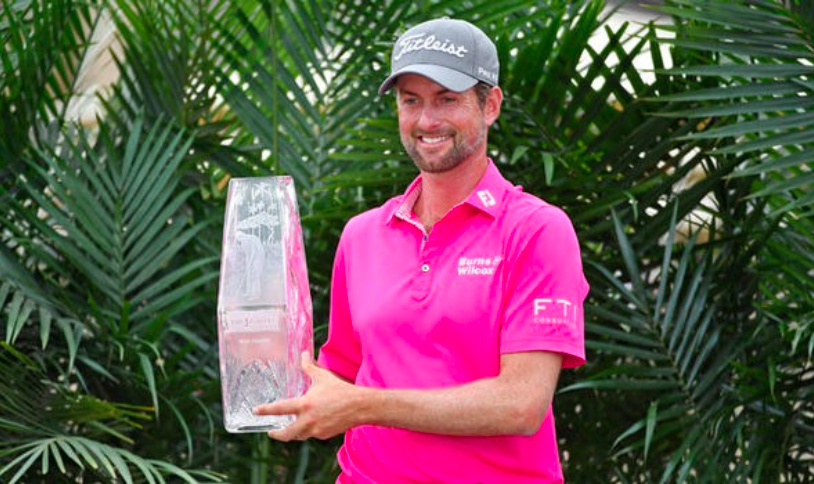
Webb Simpson Net Worth: The Rise of a Golfing Legend
Webb Simpson, an American professional golfer, has captivated fans with his impressive skills and dedication to the sport. Known for his remarkable achievements on the PGA Tour, Simpson’s journey from a promising amateur to a celebrated professional is a testament to his hard work and talent. This comprehensive article explores Webb Simpson’s net worth, career milestones, and personal life, providing a detailed look at the factors that contribute to his financial success.
Early Life and Career Beginnings
A Promising Start
Webb Simpson was born on August 8, 1985, in Raleigh, North Carolina. Growing up in a sports-oriented family, Simpson was introduced to golf at a young age. His father, a passionate golfer himself, played a significant role in nurturing Simpson’s early interest in the sport.
Simpson attended Broughton High School, where he quickly gained recognition for his golfing prowess. His high school career was marked by several notable achievements, including winning the North Carolina High School Athletic Association 4A State Championship.
Collegiate Success
After high school, Simpson continued to hone his skills at the University of Georgia. During his time at college, he became a standout player on the college golf circuit. His success at Georgia, where he was a member of the All-American team, set the stage for his transition to professional golf.
Turning Professional
Early Professional Years
In 2008, Webb Simpson turned professional and joined the Nationwide Tour (now the Korn Ferry Tour). His performance on the tour was impressive, and he quickly gained attention for his potential. Simpson’s breakthrough came in 2011 when he secured his first PGA Tour victory at the Wyndham Championship.
Rising Through the Ranks
Simpson’s victory at the Wyndham Championship marked the beginning of a successful career. Over the years, he continued to build on this success with multiple wins and high finishes in major tournaments. His consistency and skill on the course earned him a spot among the top golfers in the world.
Career Achievements
Major Victories
Webb Simpson’s career has been highlighted by several major victories. One of his most significant achievements came in 2012 when he won the U.S. Open. This victory solidified his reputation as one of the top golfers of his generation.
Simpson’s U.S. Open win was a testament to his ability to perform under pressure. The win not only earned him substantial prize money but also elevated his status in the golfing world.
Other Notable Wins
In addition to his major victory, Simpson has accumulated several other wins on the PGA Tour. Some of his notable wins include:
- 2011 Wyndham Championship
- 2018 The Players Championship
- 2019 RSM Classic
Each of these victories has contributed to Simpson’s growing net worth and established him as a prominent figure in professional golf.
Endorsements and Sponsorships
High-Profile Endorsements
Webb Simpson’s success on the golf course has attracted several high-profile endorsements and sponsorships. Companies such as Titleist, FootJoy, and Ping have partnered with Simpson, providing him with lucrative endorsement deals.
Titleist and FootJoy have been particularly significant in Simpson’s career, offering him equipment and apparel that enhance his performance on the course. These endorsements not only contribute to Simpson’s income but also bolster his public image.
Impact on Net Worth
Endorsements and sponsorships play a crucial role in augmenting Webb Simpson’s net worth. The financial backing from these companies allows Simpson to focus on his game while benefiting from substantial financial rewards.
Personal Life and Investments
Family Life
Webb Simpson is married to his college sweetheart, Dowdie. The couple has four children together, and Simpson is known for his strong family values. Balancing his professional career with family life has been an important aspect of Simpson’s personal life.
Real Estate Investments
In addition to his earnings from golf and endorsements, Simpson has made several smart investments in real estate. Owning properties in prime locations contributes significantly to his overall net worth. His investments reflect a strategic approach to securing his financial future beyond his golfing career.
Philanthropy and Community Involvement
Charitable Contributions
Webb Simpson is actively involved in various charitable endeavors. He supports organizations such as The First Tee, which promotes golf among young people, and Operation Smile, which provides medical treatment to children in need.
Simpson’s commitment to philanthropy not only enhances his public image but also underscores his dedication to giving back to the community.
Net Worth Estimation
Financial Overview
As of 2024, Webb Simpson’s estimated net worth is approximately $25 million. This figure includes earnings from his PGA Tour victories, endorsement deals, and investments. Simpson’s financial success is a result of his hard work, skill, and strategic financial management.
Comparison with Peers
When compared to other professional golfers, Simpson’s net worth places him among the top earners in the sport. His achievements on the course, combined with lucrative endorsements and smart investments, contribute to his impressive financial standing.
Conclusion
Webb Simpson’s journey from a promising amateur to a successful professional golfer is a testament to his dedication and skill. His significant victories, high-profile endorsements, and strategic investments have contributed to his impressive net worth. As Simpson continues to excel on the PGA Tour and engage in philanthropic efforts, his legacy in the world of golf remains firmly established.
Frequently Asked Questions (FAQs)
How did Webb Simpson rise to prominence in professional golf?
Webb Simpson gained prominence through his impressive performances on the PGA Tour, including his major victory at the 2012 U.S. Open. His consistent play and multiple wins have solidified his reputation as a top golfer.
What are some of Webb Simpson’s most notable golf achievements?
Notable achievements include his victory at the 2012 U.S. Open, the 2011 Wyndham Championship, the 2018 Players Championship, and the 2019 RSM Classic.
What companies have endorsed Webb Simpson?
Webb Simpson has endorsement deals with companies such as Titleist, FootJoy, and Ping, which provide him with equipment and apparel.
How does Webb Simpson balance his professional and personal life?
Simpson balances his career with family life by maintaining strong family values and making time for his wife and four children. His personal life is important to him, and he ensures it complements his professional commitments.
What philanthropic efforts is Webb Simpson involved in?
Webb Simpson supports organizations like The First Tee and Operation Smile, contributing to causes that promote youth golf and provide medical care to children in need.
Golf
Louis Oosthuizen’s Net Worth: A Detailed Look at His Wealth

Louis Oosthuizen’s Net Worth: A Detailed Look at His Wealth
Louis Oosthuizen, a name synonymous with golfing excellence, has left an indelible mark on the sport. With a career filled with remarkable achievements, including a major championship win at the 2010 Open Championship, Oosthuizen has become one of the most respected golfers in the world. But beyond his success on the greens, many fans and followers are curious about his financial standing. In this article, we delve deep into Louis Oosthuizen’s net worth, exploring the various sources of his income, his lifestyle, and how his wealth has evolved over the years.
Early Life and Career Beginnings
Humble Beginnings in South Africa
Louis Oosthuizen was born on October 19, 1982, in Mossel Bay, South Africa. Growing up in a modest family, Oosthuizen’s journey to becoming a world-class golfer was anything but easy. His love for the game was evident from a young age, and despite financial constraints, he pursued his passion with unwavering determination.
Breaking into the Professional Golf Scene
Oosthuizen’s professional career began in 2002 when he joined the Sunshine Tour, the main professional golf tour in Southern Africa. His early years were marked by consistent performances, and by 2004, he had secured his first victory. This win was a significant milestone, as it not only boosted his confidence but also laid the foundation for his future success on the international stage.
Major Career Milestones
The 2010 Open Championship
The pinnacle of Louis Oosthuizen’s career came in 2010 when he won The Open Championship at St Andrews. This victory catapulted him to global fame and significantly impacted his net worth. Oosthuizen’s performance was nothing short of spectacular, as he led the tournament from start to finish, eventually winning by a comfortable margin of seven strokes.
Consistent Performances in Major Championships
Since his triumph at The Open, Oosthuizen has continued to perform well in major championships. He has finished as a runner-up in all four majors, including the Masters, U.S. Open, and PGA Championship. These consistent top-tier finishes have not only solidified his reputation as a world-class golfer but have also contributed significantly to his earnings.
Louis Oosthuizen’s Earnings and Endorsements
Prize Money from Tournaments
One of the primary sources of Louis Oosthuizen’s net worth is the prize money he has earned from various tournaments. Over the years, his consistent performances have ensured a steady flow of income. As of 2024, his career earnings from professional golf tournaments alone are estimated to be in the millions.
Lucrative Endorsement Deals
Apart from his earnings on the golf course, Oosthuizen has also secured several lucrative endorsement deals. Companies such as Ping, Titleist, and FootJoy have partnered with him, recognizing his value as a brand ambassador. These endorsements have not only increased his income but have also played a crucial role in enhancing his global brand image.
Investments and Business Ventures
Louis57 Wines
Louis Oosthuizen is not just a golfer; he is also an astute businessman. One of his most notable ventures is Louis57 Wines, a brand that reflects his passion for winemaking. Based in South Africa, Louis57 Wines has grown significantly since its inception, contributing to Oosthuizen’s overall net worth.
Real Estate Investments
In addition to his business ventures, Oosthuizen has made several smart real estate investments. He owns properties in South Africa and the United States, including a stunning estate in Florida. These properties not only serve as luxurious residences but also add to his financial portfolio.
Louis Oosthuizen’s Lifestyle and Philanthropy
A Simple Yet Luxurious Lifestyle
Despite his wealth, Louis Oosthuizen is known for leading a relatively simple life. He enjoys spending time with his family on his farm in South Africa, where he indulges in his love for agriculture. However, this simplicity does not mean he doesn’t enjoy the finer things in life. Oosthuizen’s homes, cars, and lifestyle choices reflect a man who appreciates luxury, albeit in a modest way.
Philanthropic Efforts
Oosthuizen is also deeply committed to giving back to the community. Through his Louis Oosthuizen Junior Golf Academy, he supports young and aspiring golfers in South Africa. His philanthropic efforts extend beyond golf, as he is involved in various charitable initiatives aimed at improving the lives of underprivileged communities.
Comparing Louis Oosthuizen’s Net Worth with Other Golfers
Oosthuizen vs. Ernie Els
When comparing Louis Oosthuizen’s net worth to other South African golfing legends like Ernie Els, it’s clear that both have made significant contributions to the sport. While Els’ net worth is higher, Oosthuizen’s steady growth in earnings and investments indicates that he is on a similar trajectory.
HGlobal Comparisons
On a global scale, Oosthuizen’s net worth may not rival the likes of Tiger Woods or Phil Mickelson, but it is still substantial. His prudent financial decisions, coupled with his success on the course, have ensured that he remains one of the wealthiest golfers in the world.
The Future of Louis Oosthuizen’s Net Worth
Upcoming Tournaments and Potential Earnings
As Oosthuizen continues to compete at the highest level, there is no doubt that his net worth will keep growing. His participation in upcoming tournaments presents opportunities for further earnings, both in terms of prize money and endorsement deals.
Expanding Business Ventures
In addition to his golfing career, Oosthuizen’s business ventures are likely to expand. With the success of Louis57 Wines and his real estate investments, it’s expected that he will continue to diversify his income streams, further increasing his net worth.
Conclusion
Louis Oosthuizen’s journey from a small town in South Africa to becoming one of the wealthiest golfers in the world is nothing short of inspirational. His net worth is a testament to his hard work, dedication, and smart financial decisions. As he continues to compete and grow his business ventures, there’s no doubt that Oosthuizen’s financial future looks incredibly bright.
Frequently Asked Questions (FAQs)
What is Louis Oosthuizen’s current net worth?
As of 2024, Louis Oosthuizen’s net worth is estimated to be around $40 million. This figure includes his earnings from golf tournaments, endorsements, business ventures, and real estate investments.
How did Louis Oosthuizen make his fortune?
Louis Oosthuizen made his fortune through a combination of prize money from professional golf tournaments, lucrative endorsement deals, and smart investments in businesses like Louis57 Wines and real estate.
Does Louis Oosthuizen have any other business ventures?
Yes, in addition to his golf career, Louis Oosthuizen owns Louis57 Wines and has made several real estate investments. These ventures have contributed significantly to his net worth.
How does Louis Oosthuizen spend his money?
Louis Oosthuizen leads a relatively simple life, with a focus on family and agriculture. However, he also enjoys the luxuries of life, owning properties in South Africa and the United States. He is also actively involved in philanthropy, particularly in supporting young golfers.
What are Louis Oosthuizen’s plans for the future?
Louis Oosthuizen plans to continue competing in professional golf tournaments while expanding his business ventures. His focus remains on growing his brand, increasing his net worth, and giving back to the community through his philanthropic efforts.
-

 NBA5 months ago
NBA5 months agoLaMelo Ball Net Worth: A Comprehensive Look at the NBA Star’s Financial Empire
-
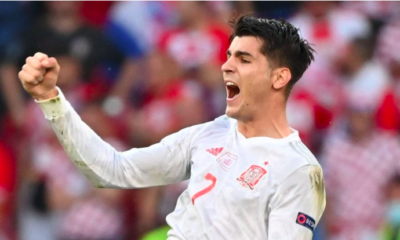
 Football6 months ago
Football6 months agoEuro 2024: Alvaro Morata Speaks Out About ‘No Respect’ in Spain
-

 Football7 months ago
Football7 months agoMeet the World Football Celebrities and Their Stories
-

 Game6 months ago
Game6 months agoThe Ultimate Guide to General Multi-Sport Events
-
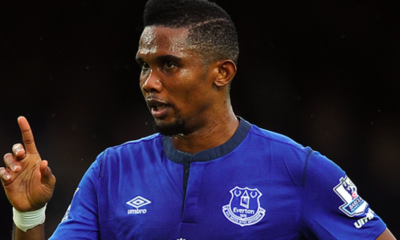
 Football7 months ago
Football7 months agoSamuel Eto’o: Legendary Cameroonian Soccer Star’s Career
-
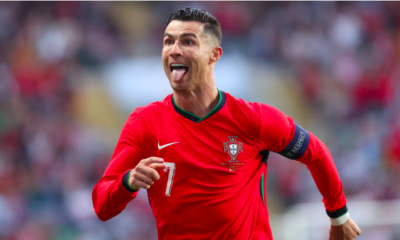
 Football6 months ago
Football6 months agoRonaldo’s Business Ventures and Investments (CR7 Brand)
-

 Wrestling3 months ago
Wrestling3 months agoJey Uso Biography and Net Worth: The Rise of a WWE Superstar
-
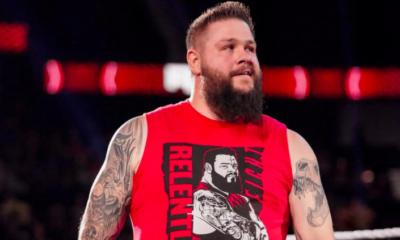
 Wrestling4 months ago
Wrestling4 months agoKevin Owens: The Prizefighter’s Rise to Fame and Fortune




